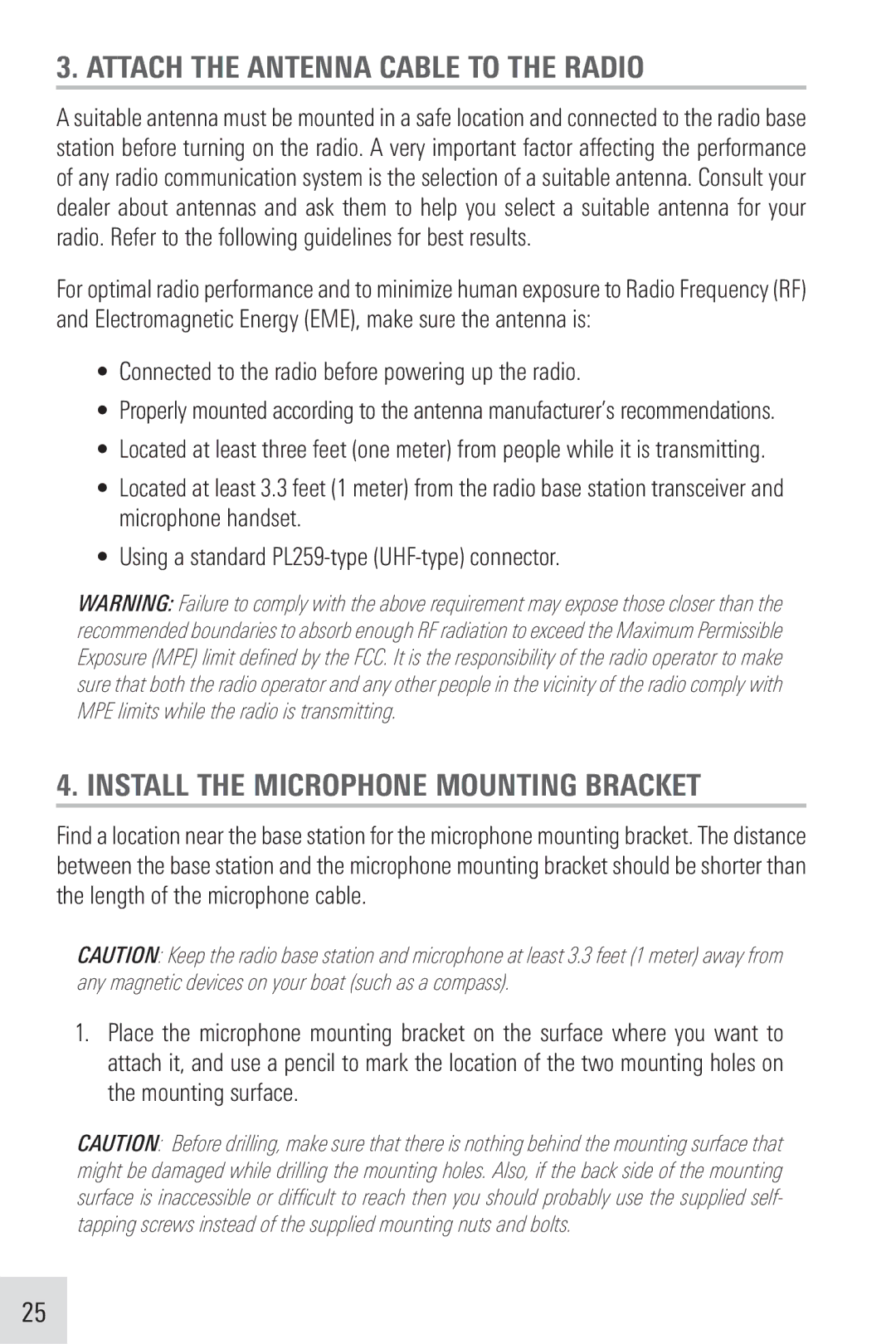VHF255S, VHF255SW specifications
The Humminbird VHF255SW is an advanced VHF marine radio designed for reliability and performance on the water. It is built for recreational boaters, offering a combination of essential features and cutting-edge technologies that enhance communication and navigation safety.One of the standout features of the VHF255SW is its robust 25-watt output power, which provides extended range communication, allowing users to reach distant vessels and shore stations effectively. This high power output is crucial in emergency situations or when out on open water, ensuring that skippers can maintain contact when it matters most.
The radio is equipped with a built-in Class D Digital Selective Calling (DSC) capability, which is designed to enhance safety. This feature allows users to send a distress signal automatically to the coast guard and other vessels within the vicinity, including their location coordinates. The DSC functionality can be a lifesaver in case of an emergency, providing peace of mind for boaters.
Another key characteristic of the VHF255SW is its large, high-contrast LCD display, which is easy to read even in bright sunlight or at night. The multi-color display features adjustable backlighting, ensuring users can navigate and communicate effectively in various lighting conditions. The intuitive user interface simplifies operation, making it accessible for even the most novice boater.
Additionally, the Humminbird VHF255SW is equipped with a built-in GPS receiver, which allows for enhanced positioning and mapping capabilities. This integration enables users to access real-time information, making navigation smoother and more efficient. The unit also supports navigating to specific waypoints and routes, making it an excellent tool for fishing and exploring new waters.
The radio is designed with a rugged, waterproof housing that meets IPX7 standards, meaning it can withstand submersion in water for short periods. This durability ensures that it operates reliably in rough marine conditions. The Humminbird VHF255SW also features a noise-canceling microphone for clearer communication, minimizing background noise during transmissions.
In summary, the Humminbird VHF255SW blends important marine communication capabilities with advanced technology. Its combination of high output power, DSC functionality, built-in GPS, and a user-friendly interface makes it an invaluable asset for any boating enthusiast, ensuring safety and confidence on the water. With its rugged design and reliability, the VHF255SW is a smart choice for those who demand quality and performance from their marine radio.

